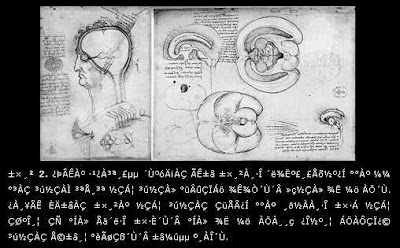Tentando
di tornare a quel fiume, questo fiume che sto per esplorare, immagino o ricordo
scrutando tra le sbarre di ferro arrugginito che coprivano un lato del vicolo
dietro la scuola di St Gall in fondo a Waterville Street, con lo sguardo fisso
in basso verso l’acqua scura ed esausta, le mie guance premute contro il ferro
freddo. Sarà solo anni dopo che scoprirò il suo nome. Per ora lo comprendo con
la noia assorta di un bambino. Fango. Acqua. Un pozzo senza fondo. Il telaio di
un passeggino. Un materasso a molle arrugginito. Il fiume, il ruscello, la
fognatura sgocciola da un’apertura scura e scompare dentro un buco nero. E’ questo
che dà a Belfast il suo nome.
L’estrema oscurità e perplessità,
tuttavia, partecipa alla derivazione del nome… il nome di Bealafarsad, che significa, secondo alcuni, città del guado della staccionata,
mentre altri lo hanno tradotto, l’entrata dello stagno. Ciascuna di queste
spiegazioni dovrebbe ottenere qualche conferma dai fatti locali, ma poiché è una questione di sole ipotesi,
sembra esserci altro spazio per ulteriori speculazioni.
Così
dice George Benn, scrivendo negli anni '20 dell’Ottocento. Dubourdieu, che
scriveva qualche anno prima, afferma che probabilmente
Belfast ha derivato il suo nome attuale
da Bela Fearsad, che significa una città alla foce di un fiume, espressione
delle circostanze, in cui si trova. La guida all’Irlanda del nord di Ward,
Lock & Co., poco più di un secolo dopo, ha fornito un’altra versione: Mentre la campana nello stemma di Belfast è un flebile gioco di
parole, la parola ‘fast’ si riferisce al ‘ fiume Farset’, o al banco di sabbia
(o anche il fiume ora interrato in High Street). ‘Bel’ in Celtico significa
‘guado’, ovvero Bel- feirste, il ‘bel’ o ‘guado’ del ’farset’.
In
tutta questa acquosa confusione una cosa sembra certa: che Belfast è una storpiatura dell’irlandese Béal Feirste. Béal è semplice. Significa un’imboccatura o la foce
di un fiume; un’apertura; un accesso. L’informatore
di Benn sembra averlo scambiato per baile, una città, giungendo così
all’equivalente inglese del nome irlandese moderno di
Il
Rev. Dineen lo definisce come un’asta; un fuso; l’ulna del braccio; un bastone;
il perno di un asse; un banco di sabbia nell’acqua bassa; un profondo e stretto
canale su una spiaggia con la bassa marea; una fossa o una pozza d’acqua; una
strofa, una poesia. Il dizionario di Edward O’Reilly e Thomas de Vere Conys è
sostanzialmente concorde, sebbene O’Reilly contenga lo strano wallet, che compare anche nel dizionario
gaelico scozzese di Duelly; e contiene il raffinato aggettivo fearsach, pieno di piccole creste sulla
sabbia, una di quelle rivelazioni che si hanno nella bassa marea dell’alba,
dove la terraferma sembra mimare le
creste del mare: Ricordo di averlo visto proprio nella remota Gaeltacht di Rann na Feirste o Ranafast nella
contea di Donegal. Per non parlare di Béal
Feirste, o Belfarset in County Mayo, dove non sono mai stato. Ma prendiamo la via più semplice, e immaginiamo
che fearsad sia un banco di sabbia,
formato dalla confluenza tra il fiume da cui deriva quel nome – il Farset – e
il fiume Lagan. Così Belfast è l’accesso
al banco di sabbia, o la foce del
Farset; o l’accesso al guado,
poiché storicamente c’era un guado in quel punto, e la chiesa di St George in
High Street, al di sotto della quale scorre il Farset, sorge ipoteticamente
nell’area della Cappella vicino al guado.
O supponiamo, con il dizionario gesuita inglese-irlandese di McCionnaith,
che fearsad rappresenti
l’asse, come nell’espressione, Bíonn an domhan ag casadh ar a fhearsaid
féin, il mondo ruota intorno al proprio asse: questo viene immaginato, non come
un’osservazione scientifica, ma come una reazione a qualche altro elaborato e
banale aneddoto. E mio padre mi disse che le forze dell’Asse durante la Seconda
Guerra Mondiale erano in verità conosciute come Lucht na Feirste, o il popolo dell’Asse (da non confondere con il popolo
X dell’eponimo romanzo di fantascienza, inventato dall’ex corrispondente
politico della BBC, W.
D. Flackes). O in modo più fantasioso, potremmo prendere la poesia di Dineen e lasciare che Belfast
sia la bocca della poesia – Farset è naturalmente
connesso al latino volto nel solco,
conosciuto come versus? E
stranamente, per una cospirazione di storia, incidenti e geografia, il fiume
Farset, questo ruscello nascosto, è tutte queste cose: è l’asse tra le opposte Catholic
Falls Road e Protestant Shankill, lo seguiamo attraverso la vecchia Shankill
Graveyard – ora un parco pubblico – finché non scompare sotto Shankill Road e
riemerge in Bombay Street (bruciata durante i conflitti del ’68), scorre lungo
il retro di Cupar Street, seguendo quasi esattamente il confine della Peace-Line, questo
muro alto trenta piedi di ferro ondulato e graffitato, l’interfaccia, il
termine, perso in quello che sopravvive della Venezia industriale di Belfast –
poiché l’acqua, dopotutto, era energia – un labirinto di dighe, bacini, canali,
sprofondamenti, ponti pedonali che ricordo nei miei sogni, costruito vicino agli
stabilimenti Titanic, gocce di vapore penetrano a intermittenza attraverso la
sabbia e lo smog, così sprofonda e riaffiora a Millfield e poi si perde nel suo
canale definitivo sotto High Street. Ricorda un fuso, braccia, le canzoni delle
ragazze lavoratrici. Non ricorda niente: nessuno entra nello stesso fiume due
volte. O, come affermano alcuni spiritosi, nessuno entra nello stesso fiume una
volta.
di Ciaran
Carson, da Belfast Confetti (Wake Forest University
Press - 1989)
trad. g.r.
trad. g.r.







